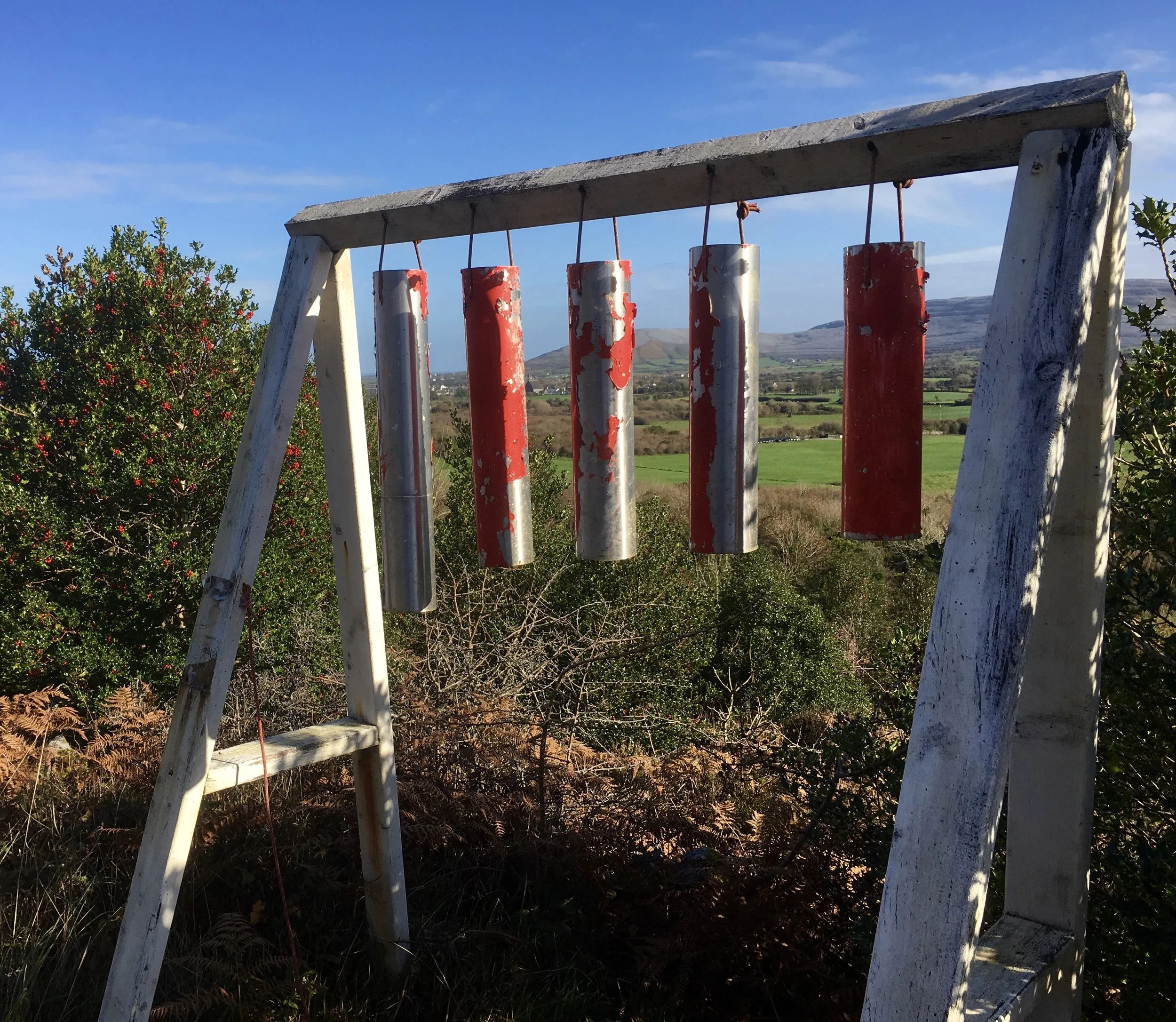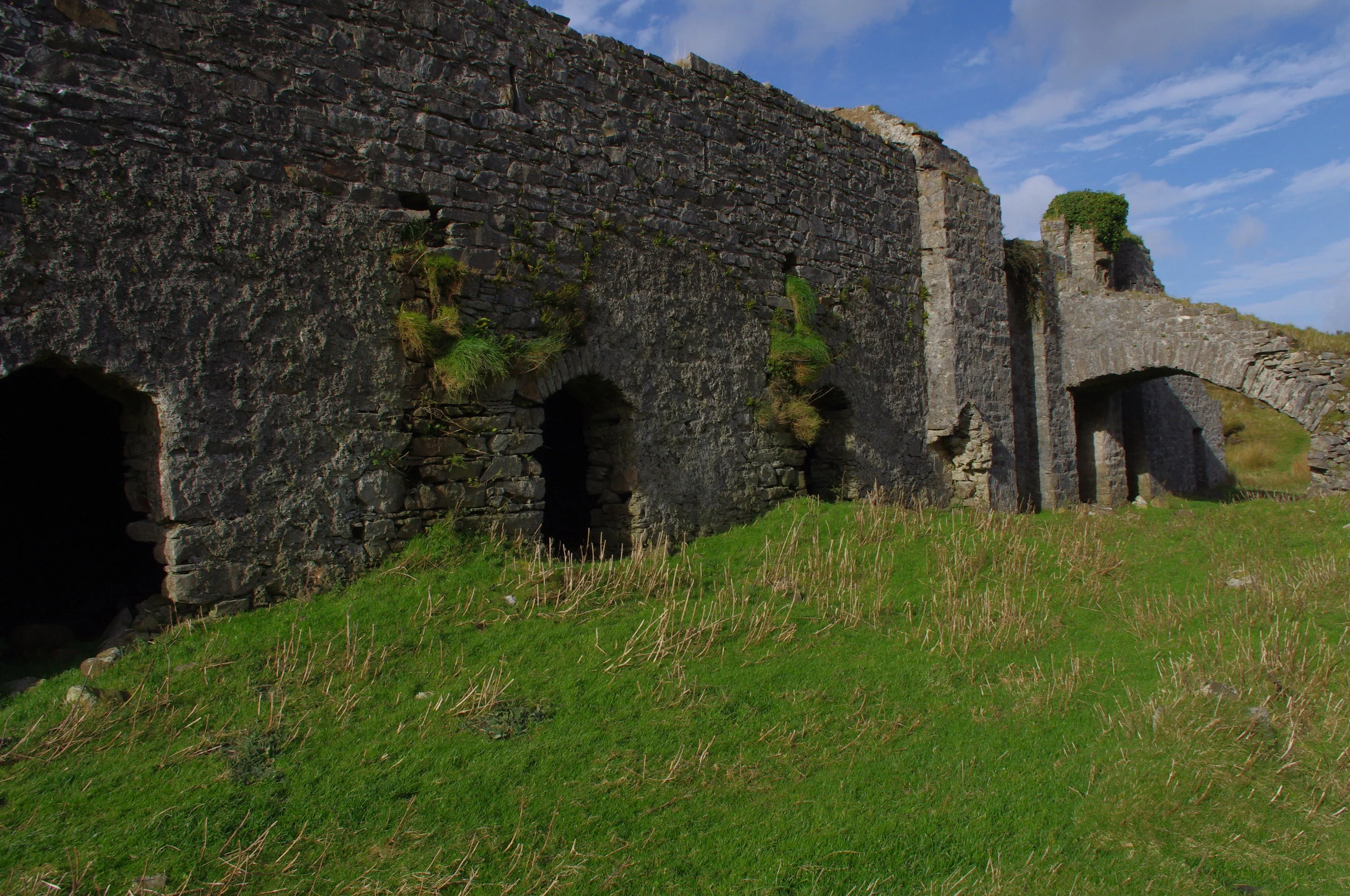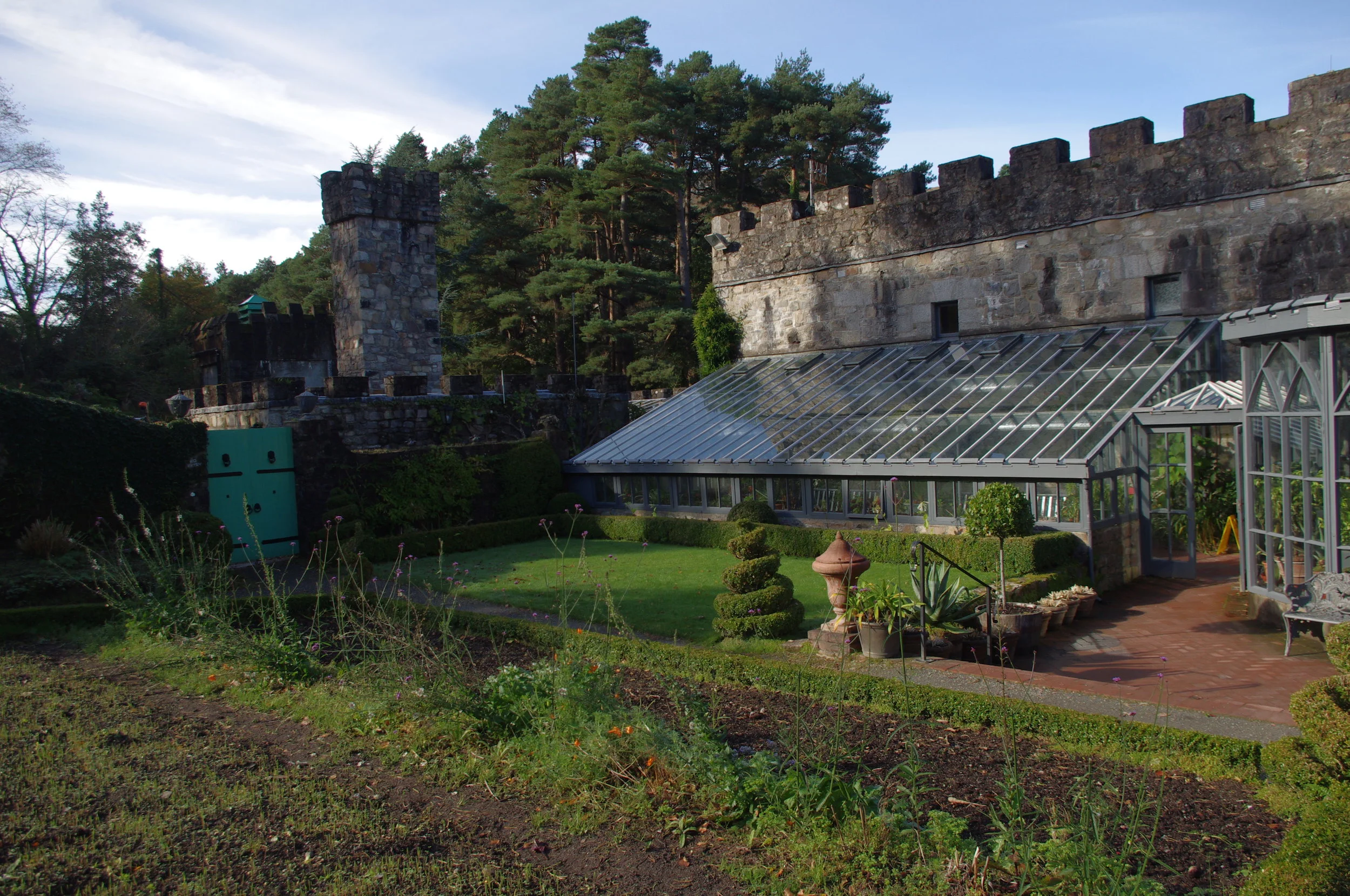The weather has shed its warmth and the hills are masked again in grey. I awoke this morning to drips pulsing in the downpipes. This ‘soft’ day is hurried by wind coming in off the sea. It’s not a morning for walking the limestone or working in the studio. I write in my room at our artists’ house, looking from time to time to the muted sky tones and the virulent green of the fields, waiting for abatement so I can tread the paths again.
I’m unspooling after a short furlough in the north. I took a long drive from county Clare through Galway, Mayo and Sligo to Donegal, along the coast, by farmland, through cuttings in tumbling rock. Donegal’s landscape might rival the Burren for beaches, steep slopes and stone but each place haunts the imagination. These places are more than landscape: they inhabit ecologies of climates, geologies, grasses, wildflowers, quiet cows, roads, tangled hedgerows, dancing crows, music and people. There is fragility and transformation.
The Burren College of Art and its signature form Newton Castle squat at the foot of Cappabhaile Mountain near the village of Ballyvaughan. It’s a home-place for artists, of any intention, where art-making is honoured and change happens. Students from art colleges in the USA, emerging and established Irish artists, alumni returning for scholarship residencies, and artists, like myself, on self-funded residencies are welcomed. The milieu is infused with goodwill and creative motivation and the land seeps into everything. Today, when the weather cleared, rather than visiting my studio I took a new way, through fields, along steep paths of brambles and hawthorn and farewell summer wildflowers until, wait…a row of bells on the hillside: five pipes, with red paint pealing back to reveal recycled metal, strung from a wooden frame. I banged the gongs with a beater on a string (an invitation), enjoying the decibels and tintinnabulation on the hillside on a Sunday afternoon. What can a sense of the sacred be? I recorded some sounds before walking further up onto the signature stone plateau of Cappabhaile from where I could see across the valley towards the eastern uplands and down to the village spire and the sea. The sun was warm and the breeze light puffs against my skin. Later, when I returned to the house, I added some drone sounds to the bells, a hymn from the earth and sky. Creativity follows me here, chasing me into webs and wantonness.
Donegal. Summer hesitates and autumn bequeaths russet on grasses, bracken and heather. Muting here gentles the largeness of things. The hills and coastline sculpt this place. I wander with a friend who knows the land well and takes me to places mapped by stories lived. We go to Glenveagh Castle, built by American money in the nineteenth century on the shores of a lake in the mountains. We take the castle tour and stand in a roundhouse used by people-with-profiles, like Greta Garbo and Charlie Chaplin; we walk through a food garden of linear proportions, built as if geometry matters; track through trees, on paths and terraces that fall away from the hills in the low autumn sun. A eucalypt stretches its boughs as if unsure of its place but is going to take it anyway: a moment of Australia in Donegal. The distant hills of the park fold their saffron mounds into each other. What is a castle for? A monument to success for the rich? Or a reminder that we can all share in wonder, whatever our class. It’s now a museum hovering on the brink of a beautiful national park, like the planet at the edge of precarious. We drove too along a tilting road, through moorland hued in cinnamon and bronze to a ruined fortress house, a Bastle, on a hill in a wide valley near a decaying railway line. Here was silence. And no invading tourists. Are they the new colonials? My studio became the rocks beside the stream and the dark stone cellars beneath the ruins.
We walk in Ards Forest Park, not far from the seaside town of Dunfanaghy. Near the shoreline I feel a tinge of belonging in the light spinning across the trees that lean away from the wind coming over Sheephaven Bay. The unkempt woods (that I’ve missed in the Burren) remind me of the forests in Tasmania that I’ve fought for so long to protect and yet they are still at risk of decline from logging. I know so little about Irish native woodlands and a bit of research assures me there is elm, birch, oak, ash, rowan, yew and hawthorn, with introduced species that include chestnut, sycamore, beech and stands of spruce. There’s rhododendron too, but it’s a weed, choking many plants. And I see ivy, pulling at bark and spiralling up trunks and along the forest floor. I want to rip it out, as an invasive weed, but I see it has a delicacy here in this forest, with all these European trees, like its familiar filigreed attention to ruins and neglected gardens. How to translate Tasmanian ecologies to knowing this place? I feel subsumed in the new and strange, awake to how being here might let me be there: more present and awake.
Yesterday I took the bus to Galway with my residency house-mate and we had lunch in The Front Door pub. It’s a warren of caves made all the more mysterious with Halloween decorations, stairways and archways that lead deeper and deeper into caverns. I’ve never been in a pub like this in Australia. It’s on the cusp of spooky and magnificent. We walked the laneways and I had a haircut in a barbershop because hairdressers were closed for a fundraiser (for a local family affected by tragedy) or else fully booked. My barber was a Syrian refugee, from Aleppo, a universe away from this calm, prosperous town that’s known other kinds of pain. Ireland, oh Ireland.
Chimes on Cappabhaile
Bastle, Fortress House, Dunfanaghy, Donegal
Glenveagh Castle, Letterkenny, Donegal


